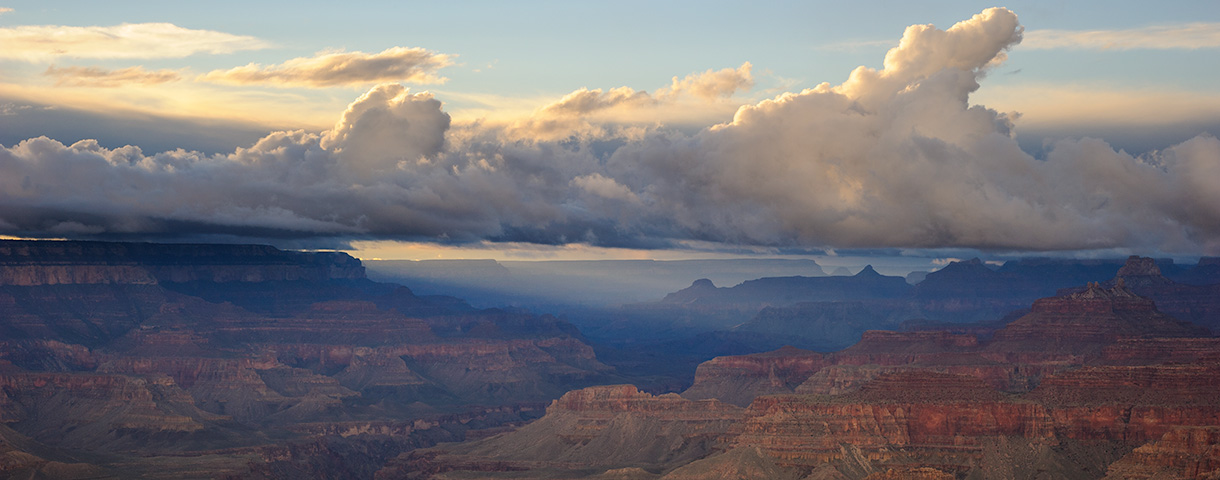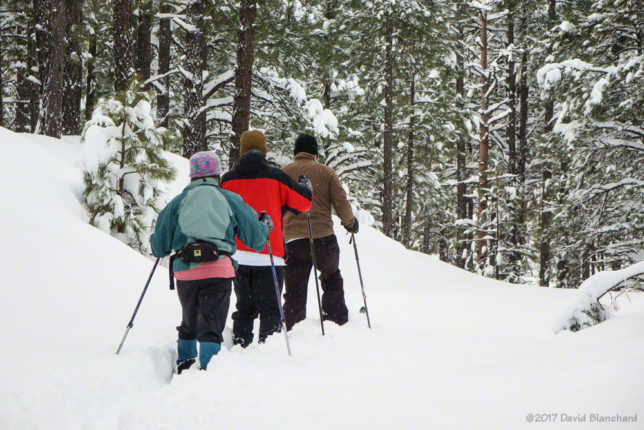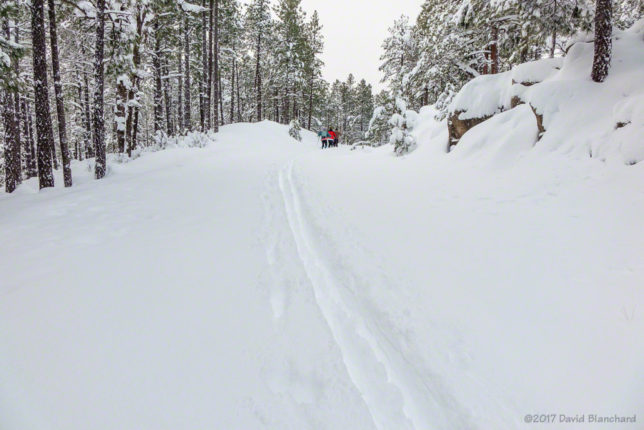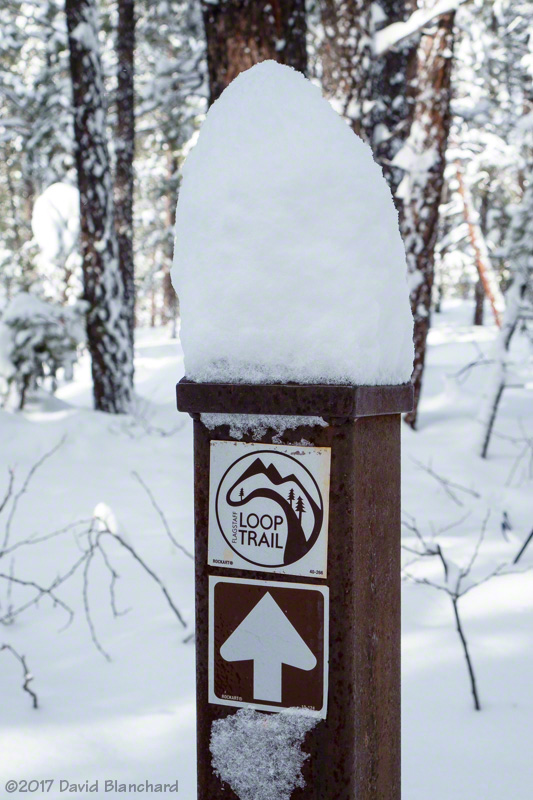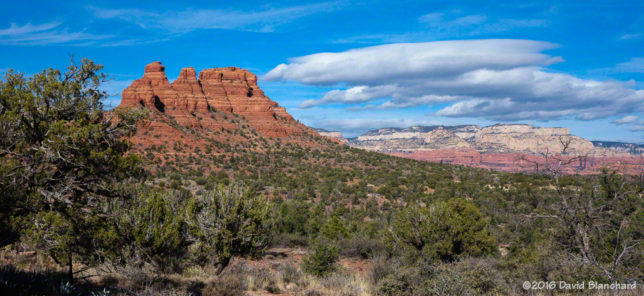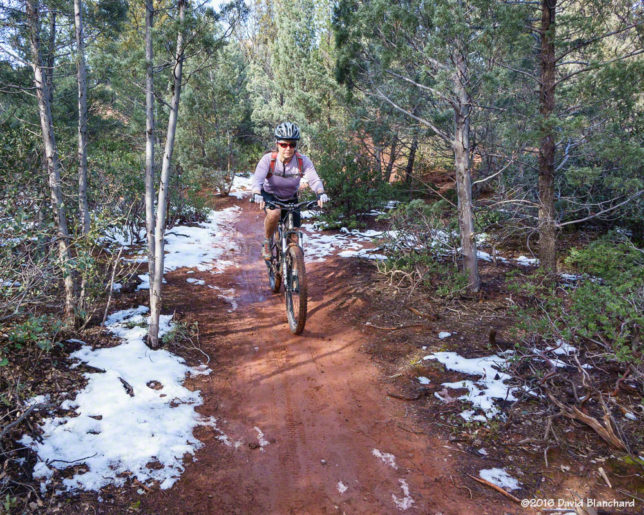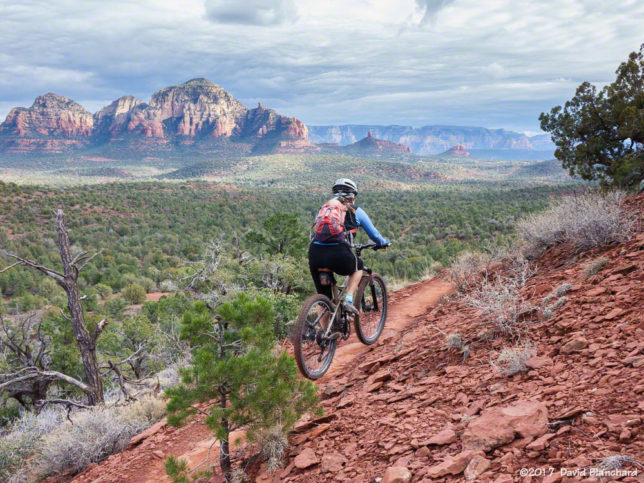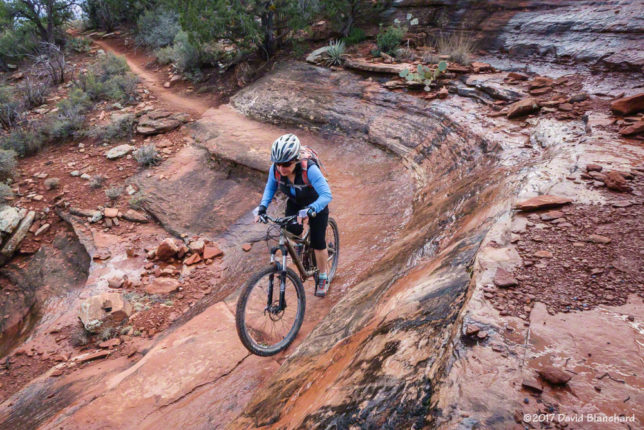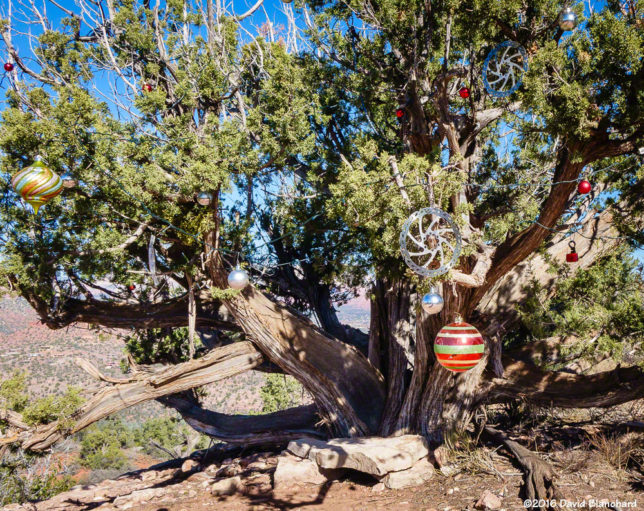After a fairly unusual late Fall and early Winter—in which we were far more likely to have rain than snow—“Real Winter” showed up and made a powerful statement. The six-day storm total for snow in Flagstaff was 36+ inches which allowed this event to slip into the Top 10 multi-day snow events.
The downside to such an event, of course, is dealing with snow removal. No sooner would we clear the driveway and sidewalks than a snow plow would throw a 3 to 4 foot berm of hard snow on the driveway. Sigh. Does this qualify as a “Sisyphean Task?”
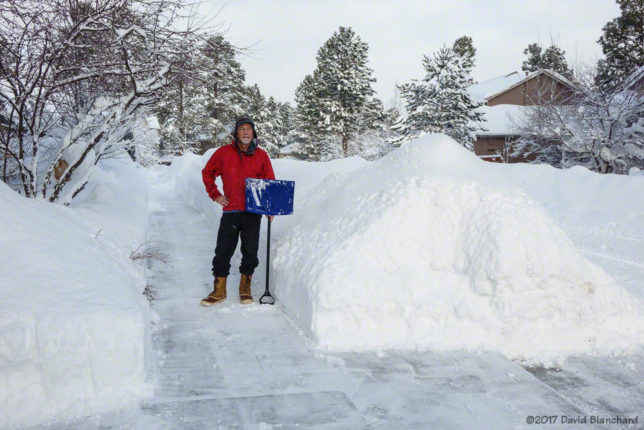
Enough work. Time for play. And so we headed for the San Francisco Peaks and the Kachina Wilderness for some backcountry skiing. The peaks received in the neighborhood of 7–8 feet of new snow. Dreams of deep powder motivated us!
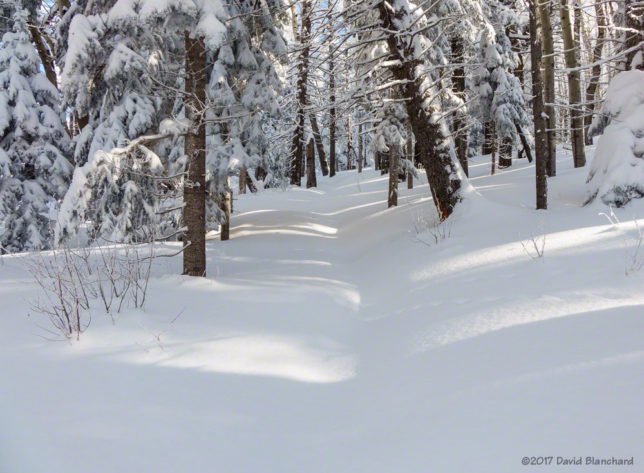
We arrived at the Arizona Snowbowl ski area lower parking lot and headed towards the Humphreys Peak Trail. We broke trail through the deep snow—and only veered off the trail once—for about a mile before picking up an established ski track from downhill skiers. This provided a much easier route. We broke off from the trail and followed a set of ski tracks up to the area known as Flying Dutchman.
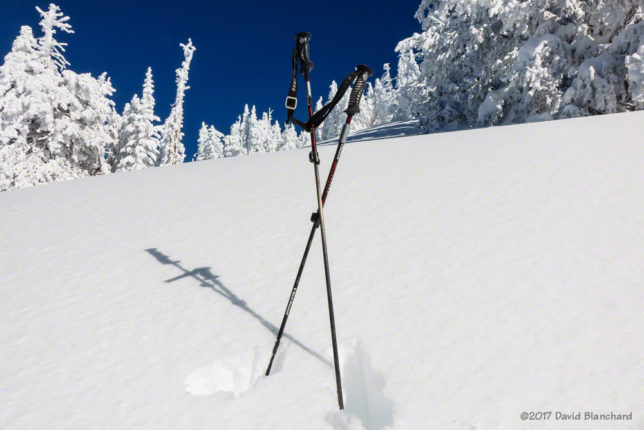
This area had already seen a fair bit of ski activity and the snow cover was carved up. We wanted fresh powder so we continued up through the trees—once again breaking trail through deep snow. The trees vary here from tightly packed to open glades and skiing down requires navigating from open glade to open glade and minimizing the trees. Easy to say—harder to do.
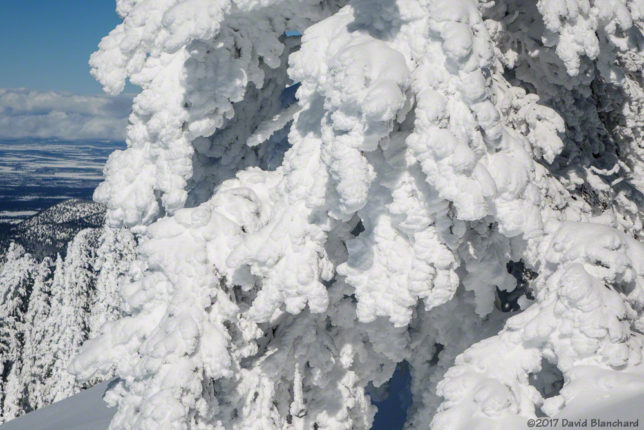
We continued up to the B-24 bomber crash site where we decided to stop. Above this point the trees thin out quickly and the threat of skier-triggered avalanches was present. We had lunch, peeled climbing skins off our skis and headed down. We had gained almost 2100 vertical feet since leaving the car and it was time to convert all that potential energy into kinetic energy.
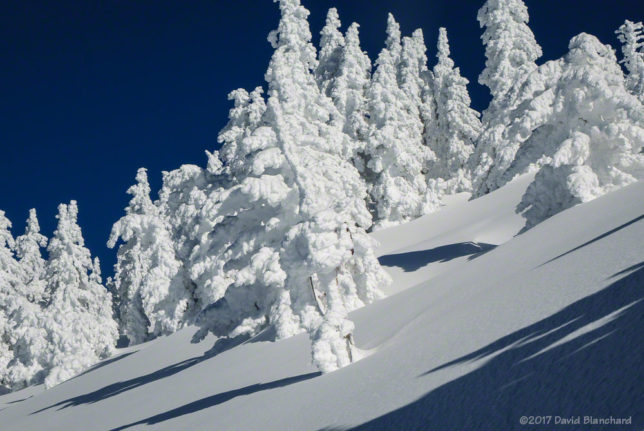
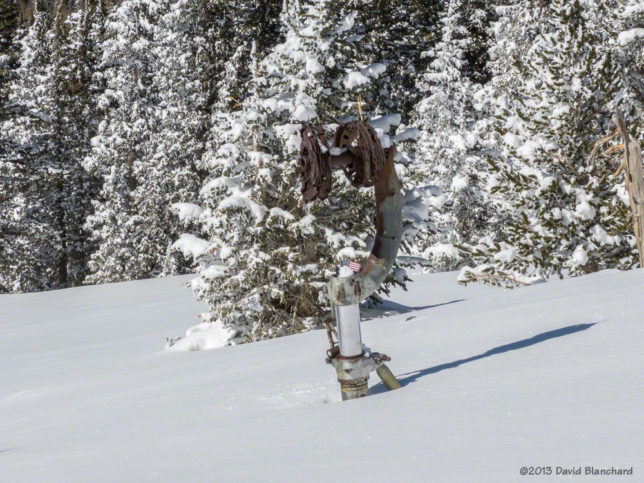
At this elevation (~11,400 feet) there had been significant riming on the trees. So much rime had accumulated on the branches and needles that the trees looked like large heads of cauliflower. Rime had also accumulated on the upside-down landing gear of the B-24. This is the only piece of wreckage that is visible in the winter. Everything else is buried.
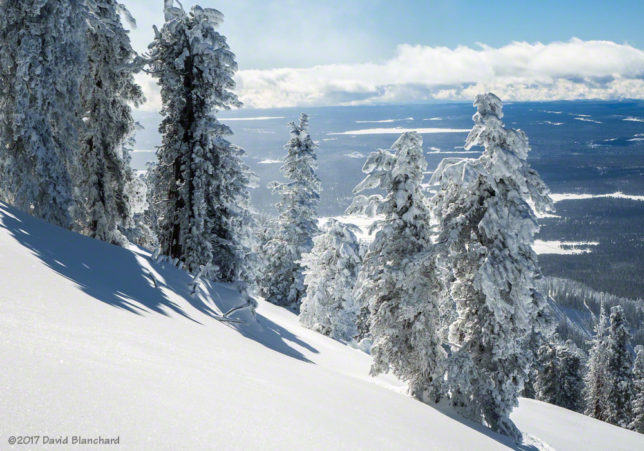
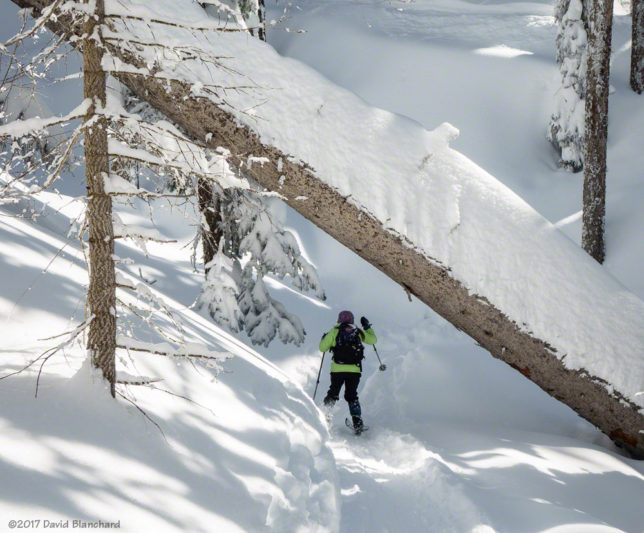
There are not many pictures of the downhill descent. Too much fun to stop and take photos!
